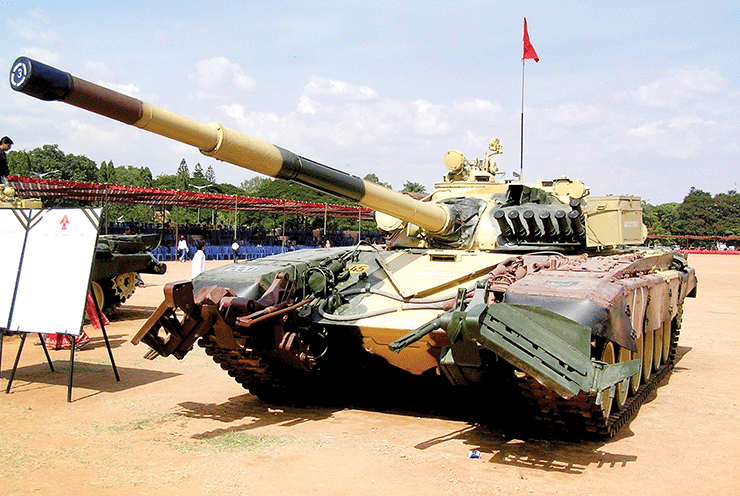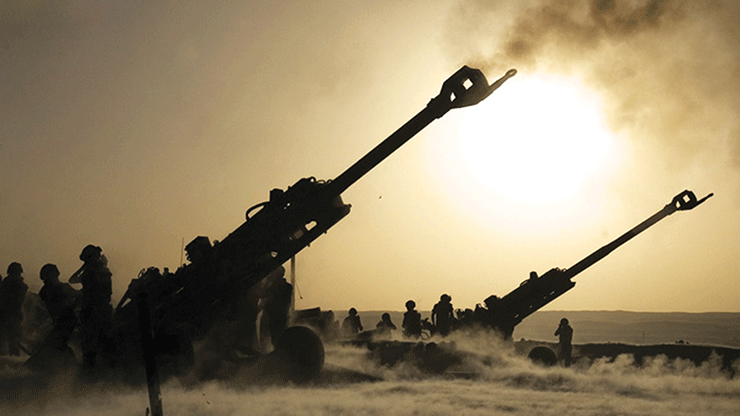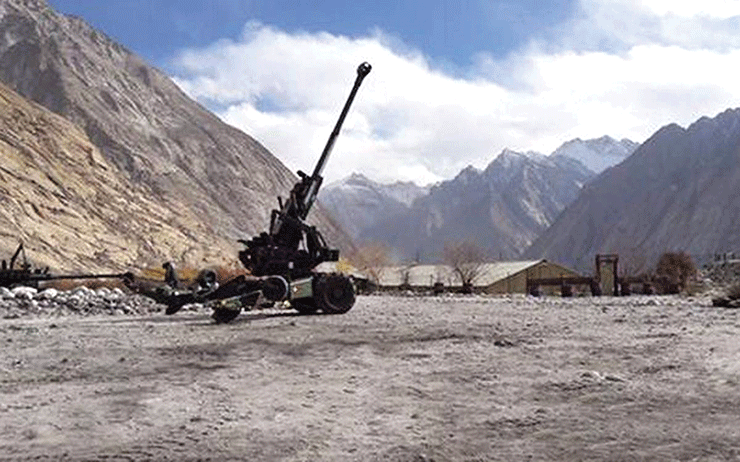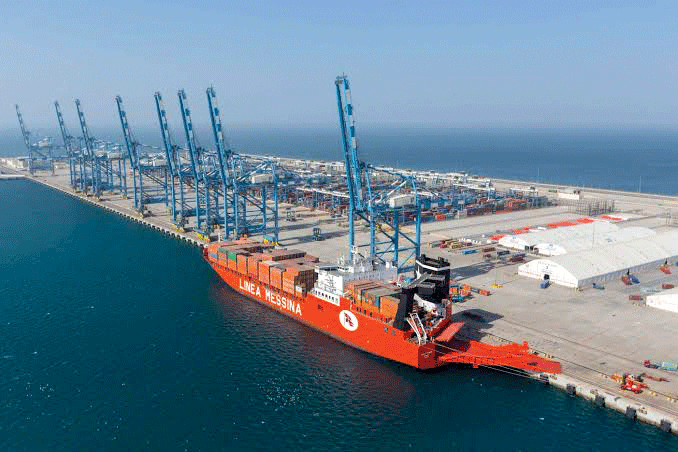
India today lives in and is adjacent to some of the most troubled regions in the world. It faces many threats and challenges to its external and internal security, the foremost being the long festering dispute over Jammu and Kashmir with Pakistan and the unresolved territorial and boundary dispute with China. The assertiveness of China vis-a-vis India is clearly evident with the bitter Doklam episode, Chinese nexus with Pakistan on Kashmir, and its increasing military presence in the Gilgit-Baltistan area of Pak-occupied Kashmir (PoK) and the Gwadar Port – these are serious security challenges for the Indian military and do not augur well for long-term peace and stability in the region.
The insurgencies in Jammu and Kashmir and the northeast region fuelled by Pakistan and China respectively, the Maoist threat in India’s heartland, the likely deteriorating security environment in the Af-Pak region (in the wake of American troops withdrawal) and the recent happenings in West Asia have further vitiated India’s strategic environment. The prevailing situation has forced India’s military to plan and prepare for the possibility of a ‘two front’ war in any future conflict on our northern and western borders. India therefore not only faces a very challenging strategic environment but is also staring at the stark reality of its two adversaries possessing significant military capabilities and modernising rapidly.
In such a strategically adverse environment, the Indian military needs to modernise and create force structures that are capable of undertaking network centric operations on land, sea and air while fighting a two front war. Although the Indian armed forces have drawn up elaborate plans for modernising and qualitatively upgrading their capabilities for future combat, the pace of modernisation has been painfully slow mainly due to the lack of adequate funding (deterioration of Indian economy in last two years and resultant cuts in defence budget). Not only are a large number of weapon platforms languishing in the procurement pipeline due to lack of capital funding, but the armed forces have been forced to even slash some operational requirements. While some key initiatives by the Government on the long pending military reforms, like constitution of the Defence Planning Committee (DPC) and the appointment of a Chief of Defence Staff (CDS) have been recently implemented, their impact on the forces modernisation presently is negligible.
Army Modernisation Status
In this entire military modernisation and transformation process the state of the third largest Army in the world leaves much to be desired – the manpower intensive army’s progress has been extremely sluggish to say the least. While there seems to be political and bureaucratic obliviousness to the strategic reality, the military and specifically the army is well seized of the realisation that unless India takes immediate measures to accelerate the pace of its military modernisation and upgradation, the gap with China which is only a quantitative gap at present, will soon become a qualitative gap, given the rapid rate of PLA modernisation and infrastructure build-up in Tibet. Likewise, the slender edge that the Indian Army now enjoys over its Pakistani counterpart in conventional conflict is being eroded as Pakistan is spending considerable sums of money on its military modernisation under the garb of fighting radical extremism and the flaunting of the availability of tactical nuclear weapons.

The Indian Army has been grappling with ill-equipped infantry battalions, lack of modern artillery howitzers (though the situation is now gradually improving), night blindness, obsolete air defence, aging helicopters and shortage of ammunition for years now. This aspect has been amply elaborated upon and highlighted by the military as well as the top most auditing authority like the CAG especially on the critical deficiencies in equipment, weapon systems and ammunition. With the 1.3 million army lagging far behind in the modernisation / upgradation process, its war fighting capability stands compromised. Most of its weapon systems are bordering on obsolescence and need to be replaced. Ambitious plans to transform the army from threat-based to capability-based force by 2022, proficient in conducting hybrid missions, countering asymmetric threats and fighting a two front war, have been thwarted by the MoD’s hidebound bureaucracy and vacillating decision-making.
The modernisation of Infantry, a key element of any army is yet to take off. The Infantry today lacks the basic personal weapons in terms of assault rifles and carbines – a limited quantity of these are being procured (ex import) through a Fast Track Procedure to meet the immediate operational requirements. The thrust of Infantry modernisation was to enhance the battalion’s capability for surveillance and target acquisition at night and boosting the firepower. Plans include the acquisition of shoulder-fired missiles, hand-held battlefield surveillance radars and thermal imaging devices for night effectiveness. The F-INSAS (future infantry soldier as a system) project which was under development has also been shelved as an integrated approach, though various components of the system will be pursued separately for procurement. This programme was the lynchpin of infantry transformation to become a fully networked, all terrain and all weather personal equipment platform force for the digitised battlefield of the future, but its shelving leaves a question mark on the concept.
Mechanised forces are the driving force of Indian military’s conventional deterrence in the plains, but currently the mission reliability of a large number of its tanks and infantry combat vehicles (ICVs) is low and they are mostly night blind. The Arjun tank produced by DRDO has not met the army’s requirements due to major shortcomings, even though two regiments have been equipped with the same – The DRDO is in the process to remove the shortcomings and come up with the upgraded version in the form of Arjun Mark-II. The army’s ambitious plan to indigenously manufacture a fleet of modern battle tanks christened as ‘Future Ready Combat Vehicle’ is also stuck in procedural apathy. To meet its immediate operational requirement the army has inducted approximately 600 T-90S Main Battle Tanks from Russia and an additional 1,000 are being built locally under licence at the Heavy Vehicles Factory, Avadi. The Mechanised Infantry is currently equipped with the BMP-II infantry combat vehicles which are being upgraded for better performance and providing night fighting capability. However a 10 year old plan to acquire a suitable ‘Future Infantry Combat Vehicle’ to replace the existing fleet is staring at uncertainty due to divergent views of stakeholders.

Artillery is the only arm where some significant and visible progress has been made towards modernisation after two decades of stagnation. In a significant development, on November 9 last year in a special ceremony held at School of Artillery Devlali, the long awaited M777 A2 Ultra Light Howitzer (ULH) and the K9 Vajra Tracked Self Propelled (SP) Gun System were formally inducted into the Indian Army – the first modern artillery guns since the induction of 400 pieces of the Bofors 155/39 calibre FH77B in the mid 1980’s from Sweden. The success of the indigenously developed 155mm 45 calibre Dhanush gun (upgraded version of the Bofors) and reports of the indigenously developed Advanced Towed Artillery Gun System (ATAGS) achieving 40 km plus range during test firing last year, are indeed encouraging signs and auger well for the artillery modernisation process as well as indigenous capability for developing state of art howitzer systems. However, it will take another decade before the entire fleet of the vintage 105 mm guns can be replaced.
The Army Air Defence remains the most obsolete arm of army today and needs total equipment revamp on priority. The only new system inducted is the Akash Weapon System developed as a short range surface to air missile (QRSAM) – two regiments have already been equipped with the same. Another system the Russian Igla-S very short range air defence (VSHORAD) has been selected but contract is yet to be signed. There is an urgent need to speed up various other Army Air Defence weapon acquisition projects for surface to air missile systems and upgrading of old generation systems.
The Army Aviation continues to fly the vintage, outdated, unsafe and obsolete fleet of Cheetah / Chetak helicopters with no signs of replacement in sight – their maintenance itself has become a nightmare. These helicopters are the lifeline of troops deployed in high altitudes and the Siachen Glacier. The project to replace them with 200 Russian Ka-226T state-of-art helicopters is still awaiting contract finalisation after four years of deliberations. Similarly the combat engineers need to be provided with new generation bridging, mine laying and mine clearance equipment. Finally the most critical issue of shortage and quality of all types of ammunition in the army needs to be addressed at the highest levels of the Government before it becomes an ‘Achilles Heel’ like during the Kargil conflict.

Conclusion
From the above it is evident that the Indian Army’s modernisation plans are not only floundering but are also not on track. The grim situation can be gauged by the fact that the key weapon acquisition cases are piling up with the CCS without being cleared due to lack of funds. In its present state the army’s capacity to undertake operations optimally in a multi-domain and technology dominated battlefield of the future are questionable. Budgetary constraints and a poor indigenous defence industry base are the two main bottlenecks in the process. The need of the hour is to enhance defence spending by progressively increasing the defence budget from the present 2 per cent of GDP to at least 2.5 per cent, a prospect which looks unlikely in the current circumstances of heightened tensions in the West Asia and their impact on oil prices. The Indian Army is today staring at a stark reality of fighting future wars with outdated and obsolete weapon systems and technology. It is imperative that the Army be modernised expeditiously and on priority in order to be prepared to take on security challenges of the future.
– The author is an Indian Army veteran









